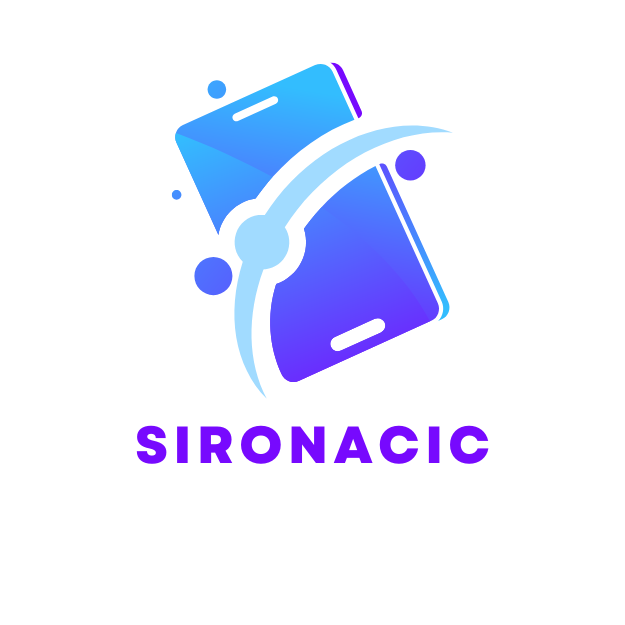In today’s digital landscape, user-generated content (UGC) has emerged as a powerful tool for brands looking to engage their audience and build trust. By harnessing the creativity and authenticity of their customers, businesses can create a vibrant community that not only enhances brand loyalty but also drives conversions. UGC isn’t just a trend; it’s a strategic approach that can redefine how brands connect with their consumers.
A well-crafted user-generated content strategy can elevate a brand’s online presence and foster genuine connections. It encourages customers to share their experiences, opinions, and creativity, turning them into brand advocates. As more consumers seek authenticity in their interactions, leveraging UGC can provide the social proof needed to stand out in a crowded marketplace. Understanding how to implement this strategy effectively can lead to lasting success in the ever-evolving world of digital marketing.
Table of Contents
ToggleUnderstanding User-Generated Content Strategy
User-generated content (UGC) encompasses any content created by consumers that brands can leverage for marketing purposes. This strategy enhances brand visibility and fosters deeper connections with target audiences.
Definition and Importance
User-generated content refers to any form of content—images, videos, reviews, or posts—produced by customers rather than brands. UGC builds trust as potential customers perceive it as authentic and relatable. According to a Nielsen study, 92% of consumers trust organic, user-generated content more than traditional advertising. Incorporating UGC into marketing strategies increases engagement and drives brand loyalty, ultimately enhancing conversion rates.
Types of User-Generated Content
- Reviews and Testimonials: Customer feedback shared on platforms like Google or Yelp influences potential buyers.
- Social Media Posts: Content created by users on social networks, tagged with brand-related hashtags, showcases real-world experiences.
- Images and Videos: Authentic visual content produced by consumers, shared on platforms such as Instagram or TikTok, highlights product use and customer creativity.
- Blogs and Articles: Content authored by customers or influencers discussing product experiences can establish thought leadership and deepen brand trust.
- Contests and Campaigns: Brands can encourage users to submit content via contests, promoting creativity and expanding reach.
Emphasizing UGC types enables brands to choose the most effective formats for their specific audience and marketing goals.
Benefits of User-Generated Content Strategy

User-generated content (UGC) offers numerous advantages for brands aiming to strengthen their market position. These benefits include enhancing brand authenticity and fostering community engagement.
Enhancing Brand Authenticity
Enhancing brand authenticity occurs when consumers create content that reflects genuine experiences. Research shows that 79% of consumers prefer authentic brands. UGC conveys real-life interactions, allowing potential customers to relate on a personal level. When brands showcase user content—such as testimonials and social media posts—they align themselves with their audience’s values. This alignment builds trust, as consumers often perceive brands that utilize UGC as more transparent and credible.
Building Community Engagement
Building community engagement thrives on interactions initiated by consumers. UGC encourages participation, enabling brands to create a sense of belonging. Engaging consumers through contests, campaigns, and social media hashtags motivates them to share their experiences. This engagement reinforces brand loyalty and fosters a vibrant community. According to a Sprout Social study, brands using UGC witnessed a 20% increase in engagement compared to those relying solely on traditional marketing methods. When consumers feel valued in a brand’s narrative, they actively contribute, driving organic growth and expanding the brand’s reach.
Implementing a User-Generated Content Strategy
A successful user-generated content (UGC) strategy requires careful planning and execution. Brands should focus on understanding their audience and fostering an environment conducive to content creation.
Identifying Your Audience
Identifying the target audience is crucial for crafting an effective UGC strategy. Brands should analyze demographics, preferences, and behaviors to determine what resonates with potential customers. Utilizing tools like social media insights and website analytics reveals valuable information about audience interests. Segmenting audiences allows for tailored campaigns that encourage engagement. For instance, younger consumers may respond better to interactive content, while older demographics might appreciate informational posts. Understanding audience preferences enhances content relevance and increases participation.
Encouraging Content Creation
Encouraging content creation involves creating incentives and providing clear guidelines. Brands can initiate contests that reward participants for submitting content, such as photos or videos featuring products. Offering discounts, giveaways, or features on the brand’s social media channels attracts user participation. Establishing a unique hashtag allows users to easily share their content and connect with the brand’s community. Brands should also engage with user content by liking, sharing, or commenting on submissions. This interaction not only motivates continued participation but also fosters a sense of belonging among users. Implementing these strategies builds a sustainable UGC ecosystem that enhances brand visibility and drives engagement.
Measuring Success of User-Generated Content Strategy
Measuring the success of a user-generated content (UGC) strategy involves tracking specific metrics. These metrics provide insights into the effectiveness and impact of UGC efforts.
Key Performance Indicators
Key performance indicators (KPIs) help assess a UGC strategy’s effectiveness. Common KPIs include:
- Engagement Rate: Measures interactions with UGC, including likes, shares, and comments.
- Reach: Indicates how many users view the UGC across platforms.
- Conversion Rate: Tracks the percentage of users who complete desired actions, like purchases, after interacting with UGC.
- Content Generation Rate: Evaluates the volume of content created by users within a specific timeframe.
- Sentiment Analysis: Assesses the tone of user feedback related to UGC, providing qualitative insights.
Tracking these KPIs helps brands determine which aspects of their UGC strategy resonate most with their audience.
Analyzing User Feedback
Analyzing user feedback is crucial for refining a UGC strategy. Brands can utilize several methods such as:
- Surveys: Collect direct insights from users about their experiences with UGC.
- Social Listening Tools: Monitor conversations about the brand and UGC on various social media platforms.
- Review Analysis: Examine customer reviews and comments for patterns in sentiment and content preference.
- Engagement Metrics Review: Evaluate which types of UGC generate the most interaction.
These analytical approaches provide actionable insights that guide future UGC initiatives, ensuring alignment with audience expectations and preferences.
Embracing a user-generated content strategy is essential for brands looking to thrive in today’s digital environment. By harnessing the creativity and authenticity of their customers, brands can foster deeper connections and build a loyal community. This strategy not only enhances brand visibility but also drives engagement and conversions.
As brands implement UGC, they should continually refine their approach based on audience feedback and performance metrics. Engaging with users and encouraging participation will create a vibrant ecosystem that reflects genuine experiences. Ultimately, a well-executed UGC strategy positions brands to stand out and succeed in a competitive marketplace.






